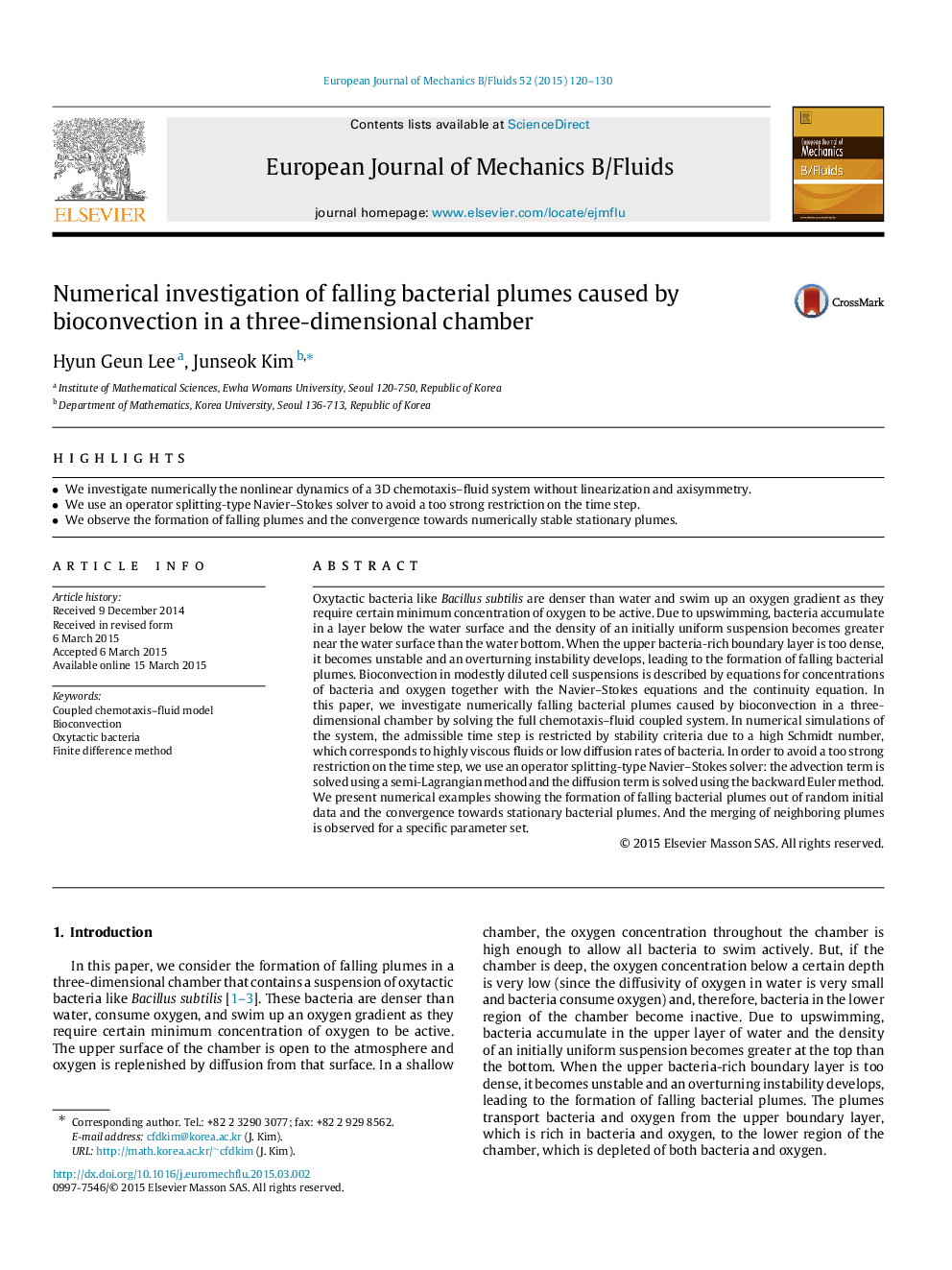| کد مقاله | کد نشریه | سال انتشار | مقاله انگلیسی | نسخه تمام متن |
|---|---|---|---|---|
| 650276 | 1457273 | 2015 | 11 صفحه PDF | دانلود رایگان |
• We investigate numerically the nonlinear dynamics of a 3D chemotaxis–fluid system without linearization and axisymmetry.
• We use an operator splitting-type Navier–Stokes solver to avoid a too strong restriction on the time step.
• We observe the formation of falling plumes and the convergence towards numerically stable stationary plumes.
Oxytactic bacteria like Bacillus subtilis are denser than water and swim up an oxygen gradient as they require certain minimum concentration of oxygen to be active. Due to upswimming, bacteria accumulate in a layer below the water surface and the density of an initially uniform suspension becomes greater near the water surface than the water bottom. When the upper bacteria-rich boundary layer is too dense, it becomes unstable and an overturning instability develops, leading to the formation of falling bacterial plumes. Bioconvection in modestly diluted cell suspensions is described by equations for concentrations of bacteria and oxygen together with the Navier–Stokes equations and the continuity equation. In this paper, we investigate numerically falling bacterial plumes caused by bioconvection in a three-dimensional chamber by solving the full chemotaxis–fluid coupled system. In numerical simulations of the system, the admissible time step is restricted by stability criteria due to a high Schmidt number, which corresponds to highly viscous fluids or low diffusion rates of bacteria. In order to avoid a too strong restriction on the time step, we use an operator splitting-type Navier–Stokes solver: the advection term is solved using a semi-Lagrangian method and the diffusion term is solved using the backward Euler method. We present numerical examples showing the formation of falling bacterial plumes out of random initial data and the convergence towards stationary bacterial plumes. And the merging of neighboring plumes is observed for a specific parameter set.
Journal: European Journal of Mechanics - B/Fluids - Volume 52, July–August 2015, Pages 120–130
